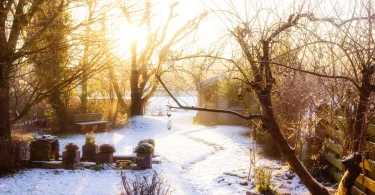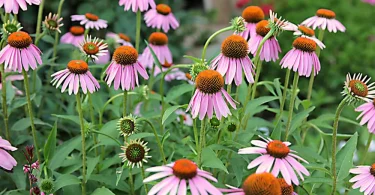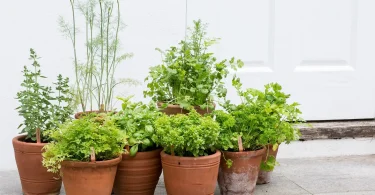Cacti and succulents are beloved for their striking shapes, vibrant colors, and low-maintenance care, making them ideal for both novice and seasoned gardeners. A key factor in their success is choosing the right potting media. Unlike typical houseplants, cacti and succulents require a well-draining, nutrient-appropriate soil mix to thrive. This guide explores the best potting media for cactus and succulents, offering expert tips to create or select the perfect mix for healthy, vibrant plants.
Why Potting Media for Cactus and Succulents
Cacti and succulents are adapted to arid environments, storing water in their leaves, stems, or roots. Their native soils are sandy, rocky, and fast-draining, with minimal organic matter. Standard potting soil retains too much moisture, leading to root rot, a common cause of succulent failure. The right potting media mimics their natural habitat, providing excellent drainage, aeration, and just enough nutrients to support growth without waterlogging.
Characteristics of Ideal Potting Media
- Well-Draining: Allows water to pass through quickly, preventing soggy roots.
- Good Aeration: Ensures roots receive oxygen, promoting healthy growth.
- Low Organic Content: Minimizes water retention and mimics desert soils.
- Slightly Acidic to Neutral pH: A pH of 5.5–7.0 is ideal for most cacti and succulents.
- Gritty Texture: Incorporates coarse materials like sand, perlite, or pumice for structure.
Best Potting Media Options
1. Commercial Cactus and Succulent Mixes
- Overview: Pre-made mixes designed specifically for cacti and succulents are widely available at nurseries or online.
- Pros: Convenient, consistent, and formulated with proper drainage materials like perlite, sand, or pumice.
- Cons: Can be expensive, and quality varies by brand. Some mixes may still retain too much moisture.
- Top Brands: Look for reputable brands like Miracle-Gro Cactus, Palm & Citrus Mix or Espoma Organic Cactus Mix.
- Tip: Check the mix’s texture before use. If it feels too dense, amend with extra perlite or coarse sand (1:1 ratio).
2. DIY Potting Media Recipe
Creating your own mix allows customization based on your plants’ needs and local climate. Here’s a reliable recipe:
- Ingredients:
- 50% potting soil (preferably peat-based or coir-based, low in organic matter)
- 25% coarse sand (builder’s sand or horticultural sand, not fine beach sand)
- 25% perlite, pumice, or crushed gravel (for drainage and aeration)
- Mixing Instructions:
- Combine ingredients in a large container, mixing thoroughly to ensure even distribution.
- Test drainage by watering the mix; water should flow through quickly without pooling.
- Adjustments:
- For arid climates or fast-draining species (e.g., barrel cactus), increase perlite or pumice to 40%.
- For succulents like echeveria that tolerate slightly more moisture, reduce sand or perlite to 20% and increase potting soil to 60%.
- Cost-Effective Tip: Source materials in bulk from garden centers or hardware stores to save money.
3. Alternative Materials
- Pumice: Lightweight volcanic rock that enhances drainage and aeration. Ideal for delicate succulents.
- Coir: Coconut fiber that retains some moisture while improving structure. Use sparingly to avoid water retention.
- Crushed Granite or Gravel: Adds weight and stability for larger cacti, mimicking rocky desert soils.
- Vermiculite (Use Sparingly): Retains more moisture than perlite, suitable for succulents in humid climates but not for arid-loving cacti.
- Caution: Avoid clay-heavy soils, fine sand, or overly rich compost, as they retain too much water.

Step-by-Step Guide to Using Potting Media
1. Choose the Right Container
- Drainage Holes: Select pots with drainage holes to prevent water accumulation. Terracotta or unglazed ceramic pots are ideal for their breathability.
- Size: Use a pot slightly larger than the plant’s root system to avoid excess soil holding moisture.
- Tip: Add a layer of pebbles or gravel at the bottom to enhance drainage.
2. Prepare the Potting Media
- Commercial Mix: If using a pre-made mix, sift to remove large chunks and add perlite or sand if it feels too dense.
- DIY Mix: Combine ingredients as per the recipe above. Sterilize the mix by baking at 180°F for 30 minutes to kill pests or pathogens (optional but recommended for indoor plants).
- Test pH: Use a soil test kit to ensure pH is 5.5–7.0. Adjust with lime (to raise pH) or sulfur (to lower pH) if needed.
3. Potting the Plant
- Preparation: Gently remove the cactus or succulent from its current pot, shaking off old soil and inspecting roots for rot (trim if necessary).
- Potting:
- Fill the pot one-third with the prepared mix.
- Place the plant in the center, spreading roots gently.
- Fill around the roots with more mix, leaving ½ inch of space below the rim for watering.
- Press lightly to secure the plant, but avoid compacting the soil.
- Top Dressing (Optional): Add a thin layer of gravel, pebbles, or coarse sand for aesthetics and to reduce soil erosion during watering.
4. Watering and Care
- Initial Watering: Water lightly after potting to settle the soil. Wait 5–7 days before watering again to allow roots to adjust.
- Ongoing Watering: Water when the top inch of soil is dry, typically every 1–2 weeks in spring/summer and every 3–4 weeks in fall/winter. Ensure water drains completely.
- Fertilizing: Use a diluted, low-nitrogen fertilizer (e.g., 5-10-10) every 4–6 weeks during the growing season. Avoid over-fertilizing to prevent soft, weak growth.
- Light: Provide 4–6 hours of bright, indirect sunlight or full sun for most cacti and succulents. Rotate pots for even growth.
Common Challenges and Solutions
- Root Rot: Caused by overly dense soil or overwatering. Use a gritty, well-draining mix and water sparingly. Remove affected roots and repot if needed.
- Poor Growth: Compacted or nutrient-poor soil can stunt growth. Refresh the mix every 1–2 years and fertilize during the growing season.
- Pests: Mealybugs or spider mites may appear. Treat with insecticidal soap or neem oil and ensure proper air circulation.
- Soil Compaction: Over time, soil may settle and retain more water. Repot annually or amend with perlite or pumice to restore drainage.
Tips for Success
- Customize by Species: Adjust the mix based on plant needs. Desert cacti (e.g., saguaro) need grittier soil, while tropical succulents (e.g., haworthia) tolerate slightly more organic matter.
- Repotting Schedule: Repot every 1–2 years to refresh the media and prevent compaction, especially for fast-growing succulents.
- Container Gardening: Use potting media in mixed succulent arrangements for a stunning display in shallow dishes or terrariums.
- Zone Considerations: In zones 5–8, grow cacti and succulents in containers and bring indoors during winter. In zones 9–11, they thrive outdoors year-round.
- Sterility for Indoors: Sterilize homemade mixes for indoor plants to prevent mold or pests in enclosed spaces.
Fun Facts About Cacti and Succulents
- Diverse Family: Cacti are a subset of succulents, all adapted to store water in harsh desert conditions.
- Longevity: With proper care and potting media, some cacti and succulents can live for decades, even indoors.
- Ecological Role: In their native habitats, these plants provide food and shelter for desert wildlife.
Troubleshooting Table
| Issue | Cause | Solution |
|---|---|---|
| Root rot | Poor drainage or overwatering | Use gritty, well-draining mix; water only when soil is dry. |
| Slow growth | Compacted or nutrient-poor soil | Refresh mix every 1–2 years; fertilize sparingly during growing season. |
| Pests | Mealybugs or spider mites | Treat with insecticidal soap or neem oil; improve air circulation. |
| Yellowing or soft leaves | Waterlogged soil | Increase perlite or pumice in mix; ensure pot has drainage holes. |
Conclusion
Choosing the best potting media for cacti and succulents is the foundation of their health and beauty. Whether you opt for a commercial mix or create your own, prioritize drainage, aeration, and minimal organic content to mimic their natural environment. By following this guide, you’ll ensure your cacti and succulents thrive, adding vibrant, low-maintenance charm to your home or garden. Start mixing your perfect potting media today, and watch your desert plants flourish!



